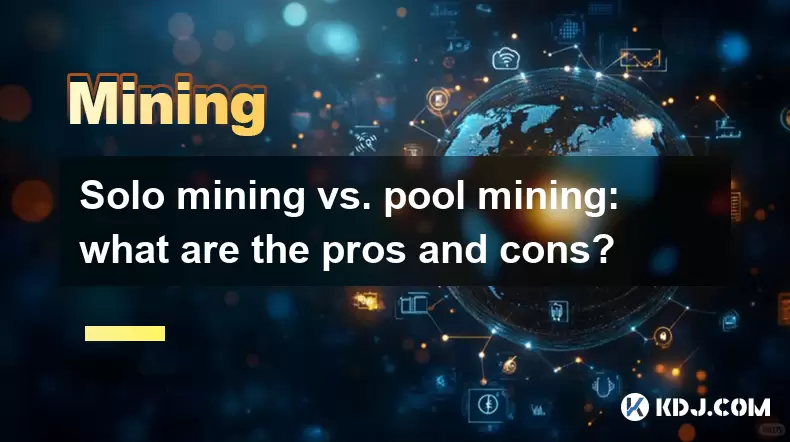-
 Bitcoin
Bitcoin $114200
0.00% -
 Ethereum
Ethereum $3637
0.56% -
 XRP
XRP $2.950
-2.01% -
 Tether USDt
Tether USDt $0.9999
0.02% -
 BNB
BNB $761.0
0.55% -
 Solana
Solana $164.1
-1.38% -
 USDC
USDC $0.9999
0.02% -
 TRON
TRON $0.3332
0.36% -
 Dogecoin
Dogecoin $0.2012
-0.52% -
 Cardano
Cardano $0.7261
-1.41% -
 Hyperliquid
Hyperliquid $37.62
-2.13% -
 Stellar
Stellar $0.3930
-2.65% -
 Sui
Sui $3.441
-0.16% -
 Bitcoin Cash
Bitcoin Cash $563.8
0.70% -
 Chainlink
Chainlink $16.50
0.09% -
 Hedera
Hedera $0.2424
-0.14% -
 Ethena USDe
Ethena USDe $1.001
0.01% -
 Avalanche
Avalanche $22.20
0.00% -
 Litecoin
Litecoin $118.0
-2.48% -
 UNUS SED LEO
UNUS SED LEO $8.991
0.12% -
 Toncoin
Toncoin $3.195
-3.87% -
 Shiba Inu
Shiba Inu $0.00001217
0.12% -
 Uniswap
Uniswap $9.674
-0.21% -
 Polkadot
Polkadot $3.633
1.00% -
 Monero
Monero $295.3
-0.82% -
 Dai
Dai $0.9999
0.00% -
 Bitget Token
Bitget Token $4.321
-0.41% -
 Cronos
Cronos $0.1392
0.73% -
 Pepe
Pepe $0.00001027
-0.89% -
 Aave
Aave $258.5
0.32%
How does "overclocking" in graphics card mining improve computing power?
Overclocking a graphics card boosts mining hash rate by increasing core and memory clock speeds, enabling faster computations and potentially higher cryptocurrency mining rewards; however, this risks hardware damage and increased power consumption.
Mar 26, 2025 at 01:00 am

How does "overclocking" in graphics card mining improve computing power?
Overclocking a graphics card for cryptocurrency mining involves increasing its core clock speed and/or memory clock speed beyond the manufacturer's specifications. This pushes the hardware to operate at higher frequencies, leading to a potential increase in hash rate, the measure of computational power used in mining. However, this comes with inherent risks.
The core clock speed dictates how fast the GPU's processing units operate. Increasing this speed directly impacts the number of calculations the GPU can perform per second, thus potentially increasing mining efficiency. Similarly, the memory clock speed affects how quickly data is transferred to and from the GPU's memory. Faster memory speeds can reduce bottlenecks, allowing the processing units to work more effectively.
But how does this actually translate to improved mining performance? The higher clock speeds allow the GPU to complete more computational cycles within a given time frame. In the context of cryptocurrency mining, this means the GPU can attempt to solve more cryptographic hash puzzles per second, increasing the chances of finding a valid block and earning rewards. The magnitude of improvement depends on various factors including the specific GPU model, the overclocking stability, and the mining algorithm.
Overclocking, however, is not a simple process of just increasing the clock speeds. It requires careful monitoring and adjustment. Pushing the hardware too hard can lead to instability, artifacts in the mining software, and even permanent hardware damage. The increased power consumption is also a crucial factor to consider.
- Identify Stable Overclocking Settings: Use monitoring software to observe temperatures, voltages, and hash rates while gradually increasing clock speeds.
- Monitor Temperatures: High temperatures can drastically reduce the lifespan of your GPU. Maintain safe operating temperatures to prevent damage. Use adequate cooling solutions.
- Adjust Voltage (Caution): Increasing voltage can improve stability at higher clock speeds but carries a higher risk of hardware damage. Only experienced users should attempt voltage adjustments.
- Test for Stability: After applying overclock settings, run a stress test to ensure the GPU remains stable for extended periods. Instability can lead to rejected shares and lost mining revenue.
- Fine-tune Incrementally: Don't jump to extreme overclocks immediately. Increase clock speeds in small increments, testing for stability after each adjustment.
The benefits of overclocking are not guaranteed and can vary greatly. Some GPUs may respond better to overclocking than others, and the potential performance gains might be marginal in certain cases. The risks associated with overclocking should always be weighed against the potential rewards.
The increased power consumption is another critical aspect. Higher clock speeds demand more power, leading to increased electricity bills. This needs to be factored into the overall profitability calculation. The extra power consumption might offset the gains from the increased hash rate. Efficient cooling solutions are also crucial to prevent overheating and potential damage.
Different mining algorithms react differently to overclocking. Some algorithms are more sensitive to memory speed, while others benefit more from higher core clock speeds. Understanding the specific requirements of the algorithm you are mining is essential for optimal overclocking.
The level of expertise needed for successful overclocking varies. While some basic overclocking can be achieved with readily available software, advanced techniques require a deeper understanding of GPU architecture and monitoring tools. Incorrect overclocking can lead to reduced lifespan, hardware failure, and wasted resources.
The software used for monitoring and overclocking also plays a role. Different applications offer varying levels of control and monitoring capabilities. Choosing the right software is crucial for safe and effective overclocking. These tools often provide real-time feedback on temperatures, voltages, and hash rates, enabling fine-tuning of overclocking parameters.
Frequently Asked Questions:
Q: What software can I use for GPU overclocking?
A: Popular options include MSI Afterburner, EVGA Precision X1, and other manufacturer-specific utilities. These tools allow you to adjust core and memory clocks, voltage, and fan speeds.
Q: Will overclocking void my warranty?
A: Overclocking often voids the manufacturer's warranty. Check your GPU's warranty terms and conditions carefully before attempting any overclocking.
Q: How much can I expect to increase my hash rate through overclocking?
A: The increase in hash rate varies significantly depending on the GPU, the cooling solution, and the specific overclocking settings. It could range from a small percentage to a substantial increase, but there's no guarantee.
Q: Is overclocking always beneficial for mining?
A: No, the increased power consumption might offset the gains from a higher hash rate, rendering overclocking unprofitable in some scenarios.
Q: What happens if I overclock my GPU too much?
A: Overclocking too aggressively can lead to instability, artifacts, crashes, and potentially permanent damage to your GPU. Always monitor temperatures and voltages closely.
Q: Can I overclock my CPU for mining?
A: While possible, CPU mining is generally less efficient than GPU mining for most cryptocurrencies, and overclocking the CPU would yield minimal additional benefit. The focus should remain on the GPU.
Disclaimer:info@kdj.com
The information provided is not trading advice. kdj.com does not assume any responsibility for any investments made based on the information provided in this article. Cryptocurrencies are highly volatile and it is highly recommended that you invest with caution after thorough research!
If you believe that the content used on this website infringes your copyright, please contact us immediately (info@kdj.com) and we will delete it promptly.
- Ethereum, Transaction Volumes, and SEC Staking: Navigating the Regulatory Landscape
- 2025-08-06 22:30:13
- Crypto, Tokens, and Metrics: Navigating the New Frontier
- 2025-08-06 23:09:22
- Crypto Market Buzz: PROVE Surges as Coinbase, Binance List Token
- 2025-08-06 22:30:13
- BlockSack Who? Base Network and Layer 2s Shake Up the Crypto Scene
- 2025-08-06 23:10:13
- Brazil, Bitcoin, Hearing Date: Is Brazil About to Embrace Bitcoin?
- 2025-08-06 20:30:38
- Stabull DEX on Base Chain: A New Era for Stablecoins?
- 2025-08-06 20:47:53
Related knowledge

What are the differences between mining on Windows vs. Linux?
Aug 06,2025 at 11:29pm
Overview of Cryptocurrency Mining PlatformsCryptocurrency mining involves using computational power to solve complex cryptographic puzzles and validat...

How to build a mining rig inside a PC case?
Aug 06,2025 at 11:01pm
Understanding the Basics of a Mining Rig in a PC CaseBuilding a mining rig inside a PC case involves transforming a standard computer chassis into a d...

How to use a server PSU for a crypto mining rig?
Aug 06,2025 at 08:39pm
Understanding Server PSUs and Their Relevance to Crypto MiningCrypto mining rigs demand stable, high-wattage power supplies to run multiple GPUs effic...

Solo mining vs. pool mining: what are the pros and cons?
Aug 06,2025 at 08:15pm
Understanding Solo Mining in CryptocurrencySolo mining refers to the process where an individual miner attempts to solve a block on their own without ...

What was the highest APY for IRON mining?
Jul 23,2025 at 05:14am
Understanding IRON Token and Its Mining MechanismThe IRON token is a stablecoin that operates within the Iron Finance ecosystem, primarily on blockcha...

What is impermanent loss in IRON pools?
Jul 23,2025 at 09:00am
Understanding Impermanent Loss in the Context of IRON PoolsImpermanent loss is a phenomenon that affects liquidity providers in decentralized finance ...

What are the differences between mining on Windows vs. Linux?
Aug 06,2025 at 11:29pm
Overview of Cryptocurrency Mining PlatformsCryptocurrency mining involves using computational power to solve complex cryptographic puzzles and validat...

How to build a mining rig inside a PC case?
Aug 06,2025 at 11:01pm
Understanding the Basics of a Mining Rig in a PC CaseBuilding a mining rig inside a PC case involves transforming a standard computer chassis into a d...

How to use a server PSU for a crypto mining rig?
Aug 06,2025 at 08:39pm
Understanding Server PSUs and Their Relevance to Crypto MiningCrypto mining rigs demand stable, high-wattage power supplies to run multiple GPUs effic...

Solo mining vs. pool mining: what are the pros and cons?
Aug 06,2025 at 08:15pm
Understanding Solo Mining in CryptocurrencySolo mining refers to the process where an individual miner attempts to solve a block on their own without ...

What was the highest APY for IRON mining?
Jul 23,2025 at 05:14am
Understanding IRON Token and Its Mining MechanismThe IRON token is a stablecoin that operates within the Iron Finance ecosystem, primarily on blockcha...

What is impermanent loss in IRON pools?
Jul 23,2025 at 09:00am
Understanding Impermanent Loss in the Context of IRON PoolsImpermanent loss is a phenomenon that affects liquidity providers in decentralized finance ...
See all articles

























































































